Medicine > Quiz > IDS 402 Module 1 quiz (GRADED A) Questions and Answers | Southern New Hampshire University (All)
IDS 402 Module 1 quiz (GRADED A) Questions and Answers | Southern New Hampshire University
Document Content and Description Below
IDS 402 Module 1 quiz The health care providers at your hospital do a very thorough job of periodic open record review to ensure the completeness of record documentation. A qualitative review of surg... ical records would likely include checking for documentation regarding • the presence or absence of such items as preoperative and postoperative diagnosis, description of findings, and specimens removed. • whether a postoperative infection occurred and how it was treated. • whether the severity of illness and/or intensity of service warranted acute level care. • the quality of follow-up care. For inpatients, the first data item collected of a clinical nature is usually • principal diagnosis. • review of systems. • expected payer. • admitting diagnosis. You have been asked to identify every reportable case of cancer from the previous year. A key resource will be the facility's • patient index. • physicians' index. • number control index. • disease index. Joint Commission does not approve auto authentication of entries in a health record. The primary objection to this practice is that • tampering too often occurs with this method of authentication. • electronic signatures are not acceptable in every state. • evidence cannot be provided that the physician actually reviewed and approved each report. • it is too easy to delegate use of computer passwords. As the chair of a Forms Review Committee, you need to track the field name of a particular data field and the security levels applicable to that field. Your best source for this information would be the • glossary of health care terms. • MDS. • facility's data dictionary. • UHDDS. In the past, Joint Commission standards have focused on promoting the use of a facility-approved abbreviation list to be used by hospital care providers. With the advent of the commission's national patient safety goals, the focus has shifted to the • flagrant use of specialty-specific abbreviations. • prohibited use of any abbreviations. • use of prohibited or "dangerous" abbreviations. • use of abbreviations in the final diagnosis. One of the Joint Commission National Patient Safety Goals (NSPGs) requires that health care organizations eliminate wrong-site, wrong-patient, and wrong-procedure surgery. In order to accomplish this, which of the following would NOT be considered part of a preoperative verification process? • Confirm the patient's true identity. • Follow the daily surgical patient listing for the surgery suite if the patient has been sedated. • Review the medical records and/or imaging studies. • Mark the surgical site. During a retrospective review of Rose Hunter's inpatient health record, the health information clerk notes that on day 4 of hospitalization, there was one missed dose of insulin. What type of review is this clerk performing? • qualitative analysis • utilization review • legal review • quantitative analysis A primary focus of screen format design in a health record computer application should be to ensure that • paper forms are easily converted to computer forms. • data fields can be randomly accessed. • programmers develop standard screen formats for all hospitals. • the user is capturing essential data elements. A key data item you would expect to find recorded on an ER record but would probably NOT see in an acute care record is the • instructions for follow-up care. • time and means of arrival. • lab and diagnostic test results. • physical findings. Using a template to collect data for key reports may help to prompt caregivers to document all required data elements in the patient record. This practice contributes to data • comprehensiveness. • accuracy. • security. • timeliness. Which of the four distinct components of the problem-oriented record serves to help index documentation throughout the record? • progress notes • initial plan • database • problem list A data item to include on a qualitative review checklist of newborn inpatient health records that need NOT be included on adult records would be • time and means of arrival. • chief complaint. • condition on discharge. • APGAR score. A qualitative review of a health record reveals that the history and physical for a patient admitted on June 26 was performed on June 30 and transcribed on July 1. Which of the following statements regarding the history and physical is true in this situation? Completion and charting of the H&P indicates • compliance with Joint Commission standards. • compliance with Medicare regulations. • noncompliance with Joint Commission standards. • compliance with Joint Commission standards for nonsurgical patients. As a new HIM manager of an acute care facility, you have been asked to update the facility's policy for a physician's verbal orders in accordance with Joint Commission standards and state law. Your first area of concern is the qualifications of those individuals in your facility who have been authorized to record verbal orders. For this information, you will consult the • policy and procedure manual. • Federal Register. • hospital bylaws, rules, and regulations. • consolidated manual for hospitals. One record documentation requirement shared by both acute care and emergency departments is • problem list. • advance directive. • patient's condition on discharge. • time and means of arrival. In preparation for an upcoming site visit by Joint Commission, you discover that the number of delinquent records for the preceding month exceeded 50% of discharged patients. Even more alarming was the pattern you noticed in the type of delinquencies. Which of the following represents the most serious pattern of delinquencies? Fifteen percent of delinquent records show • absence of SOAP format in progress notes. • missing signatures on progress notes. • missing operative reports. • missing discharge summaries. The foundation for communicating all patient care goals in long-term care settings is the • Uniform Hospital Discharge Data Set. • cognitive assessment. • legal assessment. • interdisciplinary plan of care. Based on the following documentation in an acute care record, where would you expect this excerpt to appear? • past medical history • social history • chief complaint Documentation found in acute care health records should include core measure quality indicators required for compliance with Medicare's Health Care Quality Improvement Program (HCQIP). A typical quality indicator for patients with pneumonia might be • discharged on antithrombotic. • blood culture before first antibiotic received. • early administration of aspirin. • beta blocker at discharge. In addition to diagnostic and therapeutic orders from the attending physician, you would expect every completed inpatient health record to contain • telephone orders. • standing orders. • discharge order. • stop orders. In your acute care facility it has become critical that up-to-date information regarding patients who are transferred to the oncology patient care unit be immediately sent to an outpatient scheduling system to facilitate outpatient appointments. This transfer of service can be obtained most readily from • generic screens used by record abstractors. • the R-ADT system. • the indicator monitoring program. • the disease index. For continuity of care, ambulatory care providers are more likely than providers of acute care services to rely on the documentation found in the • interdisciplinary patient care plan. • problem list. • discharge summary. • transfer record. Many of the principles of forms design apply to both paper-based and computer-based systems. For example, the physical layout of the form and/or screen should be organized to match the way the information is requested. Facilities that are scanning and imaging paper records as part of a computer-based system must give careful consideration to • use of box design. • signature line for authentication. • placement of hospital logo. • bar code placement. In 1987, OBRA helped shift the focus in long-term care to patient outcomes. As a result, core assessment data elements are collected on each SNF resident as defined in the • Uniform Ambulatory Core Data. • MDS. • Uniform Clinical Data Set. • UHDDS. Reviewing a medical record to ensure that all diagnoses are justified by documentation throughout the chart is an example of • peer review. • qualitative review. • legal analysis. • quantitative review. Setting up a drop-down menu to make sure that the registration clerk collects "gender" as "male, female, or unknown" is an example of ensuring data • timeliness. • reliability. • validity. • precision. While data governance focuses primarily on managing data as it is being created within a healthcare system, information governance focuses instead on managing • data currency. • data accuracy. • the granularity of health care systems. • the output of those systems. Gerda Smith has presented to the ER in a coma with injuries sustained in a motor vehicle accident. According to her sister, Gerda has had a recent medical history taken at the public health department. The physician on call is grateful that she can access this patient information using the area's • CPOE. • expert system. • RHIO. • EDMS system. Which of the following is a secondary data source that would be used to quickly gather the health records of all juvenile patients treated for diabetes within the past 6 months? • disease index • pediatric census sheet • procedure index • patient register The minimum length of time for retaining original medical records is primarily governed by • readmission rates. • Joint Commission. • medical staff. • state law. In creating a new form or computer view, the designer should be most driven by • needs of the users. • flow of data on the page or screen. • QIO standards. • medical staff bylaws. The best example of point-of-care service and documentation is • using an automated tracking system to locate a record. • nurses using bedside terminals to record vital signs. • using occurrence screens to identify adverse events. • doctors using voice recognition systems to dictate radiology reports. As the coding supervisor, your job description includes working with agents who have been charged with detecting and correcting overpayments made to your hospital in the Medicare Fee for Service program. You will need to develop a professional relationship with • the OIG. • recovery audit contractors. • MEDPAR representatives. • QIO physicians. Based on the following documentation in an acute care record, where would you expect this excerpt to appear? • discharge summary • admission note • clinical laboratory report • physical exam You have been appointed as chair of the Health Record Committee at a new hospital. Your committee has been asked to recommend time-limited documentation standards for inclusion in the medical staff bylaws, rules, and regulations. The committee documentation standards must meet the standards of both the Joint Commission and the Medicare Conditions of Participation. The standards for the history and physical exam documentation are discussed first. You advise them that the time period for completion of this report should be set at • 24 hours after admission or prior to surgery. • 12 hours after admission or prior to surgery. • 12 hours after admission. • 24 hours after admission. As part of Joint Commission's National Patient Safety Goal initiative, acute care hospitals are now required to use a preoperative verification process to confirm the patient's true identity and to confirm that necessary documents such as X-rays or medical records are available. They must also develop and use a process for • marking the surgical site. • including the primary caregiver in surgery consults. • apprising the patient of all complications that might occur. • including the surgeon in the preanesthesia assessment. The final HITECH Omnibus Rule expanded some of HIPAA’s original requirements, including changes in immunization disclosures. As a result, where states require immunization records of a minor prior to admitting a student to a school, a covered entity is permitted to disclose proof of immunization to a school without • any communication with the parent. • written authorization of the parent. • written authorization by the child. • documentation of any kind. The Quality Payment Program includes • Advanced Alternative Payment Models • Advanced Alternative Payment Models and Merit-Based Incentive Payment System • Merit-Based Incentive Payment System • Diagnosis-related groups An effective information governance system should include all of the following principles except one: • the principle of availability • the principle of interoperability • the principle of disposition • the principle of retention The best resource for checking out specific voluntary accreditation standards and guidelines for a rehabilitation facility is the • CARF manual. • Conditions of Participation for Rehabilitation Facilities. • Medical Staff Bylaws, Rules, and Regulations. • Joint Commission manual. INCORRECT [Show More]
Last updated: 1 year ago
Preview 1 out of 15 pages
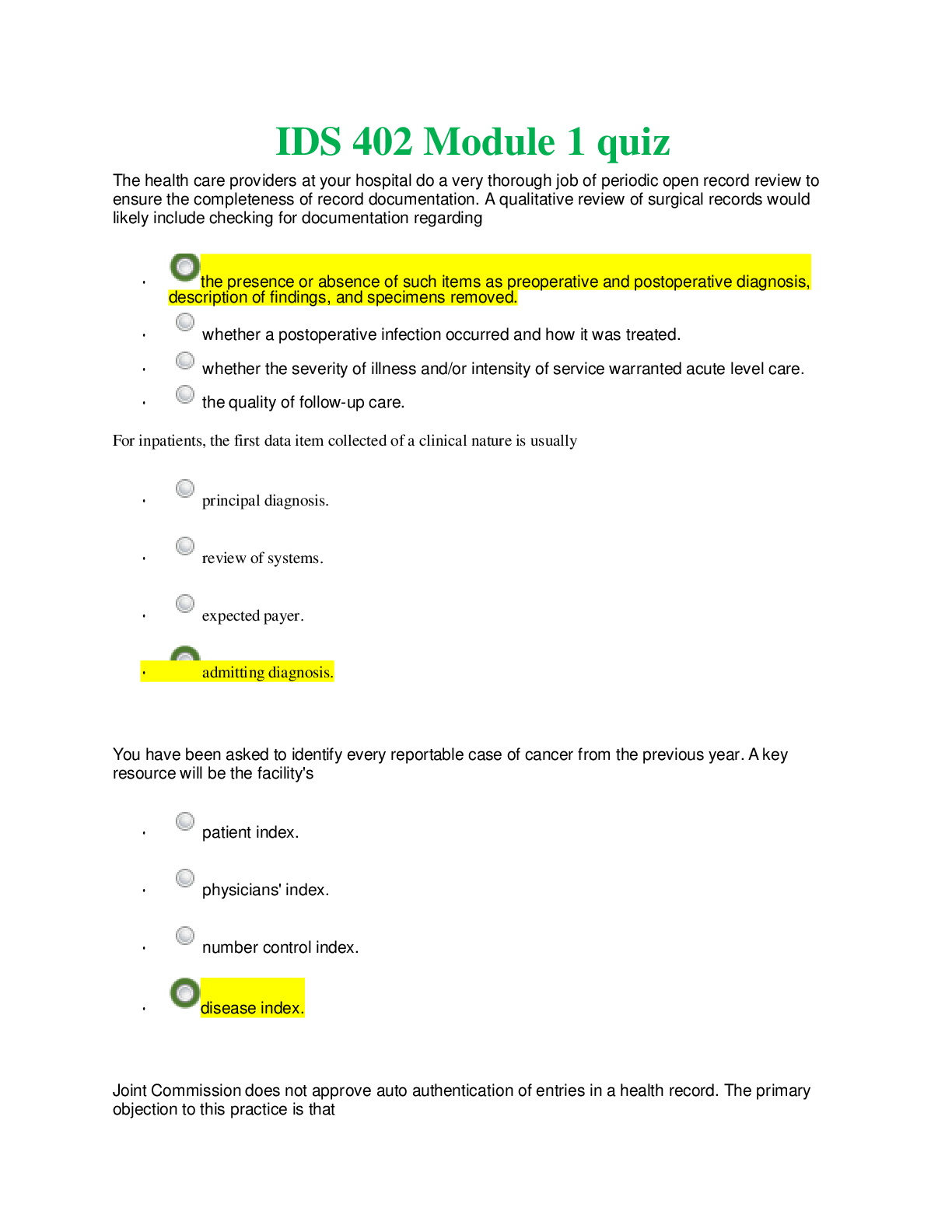
Reviews( 0 )
Document information
Connected school, study & course
About the document
Uploaded On
Aug 03, 2022
Number of pages
15
Written in
Additional information
This document has been written for:
Uploaded
Aug 03, 2022
Downloads
0
Views
58

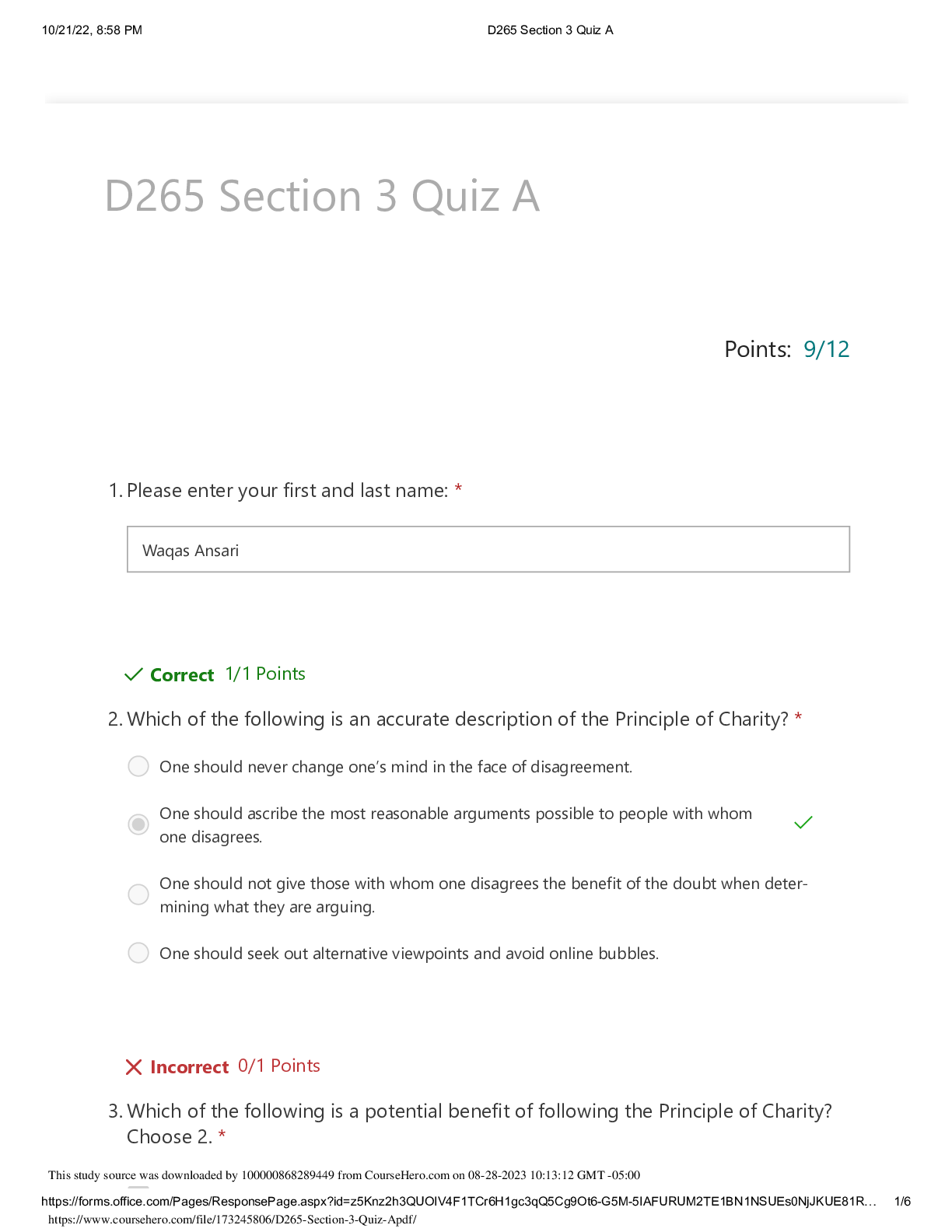
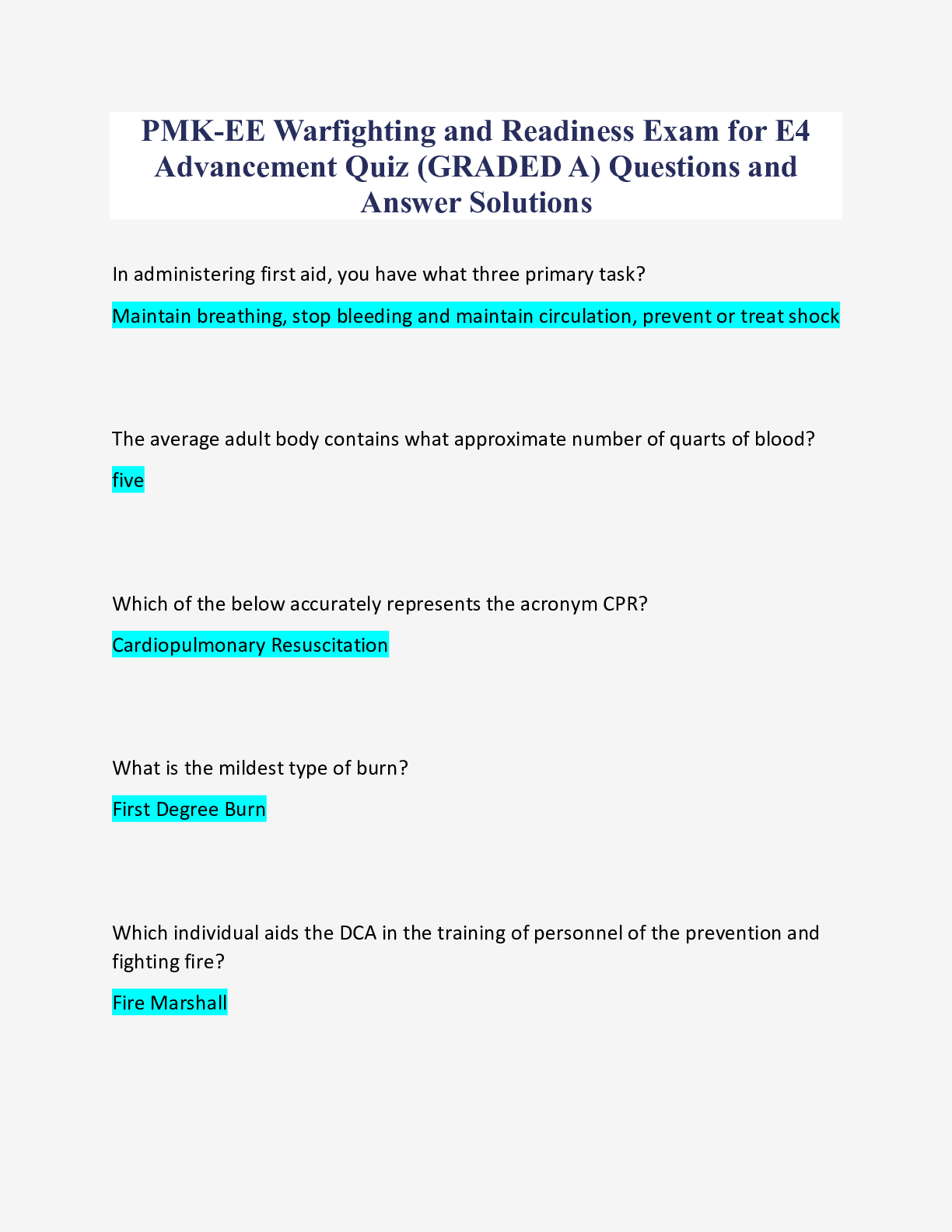

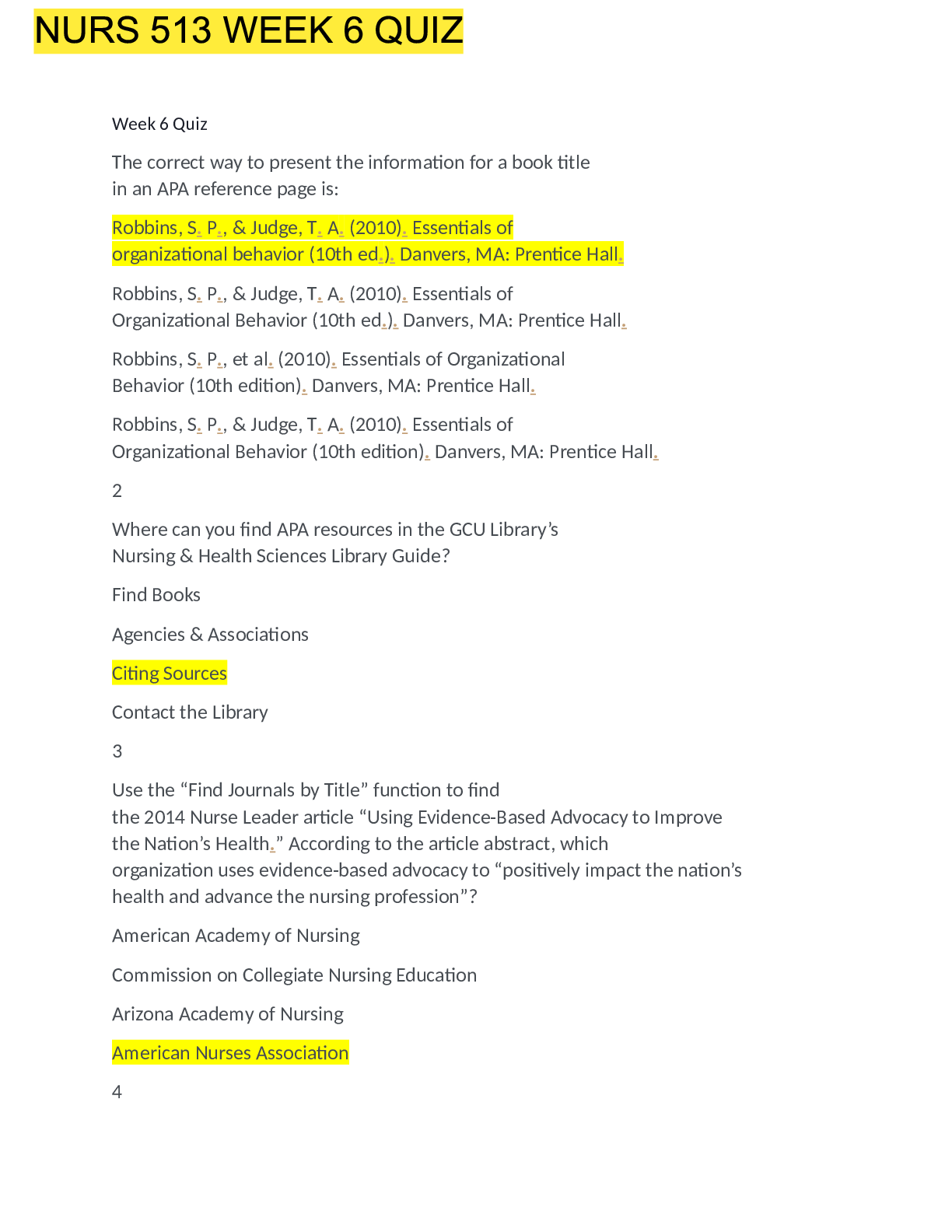




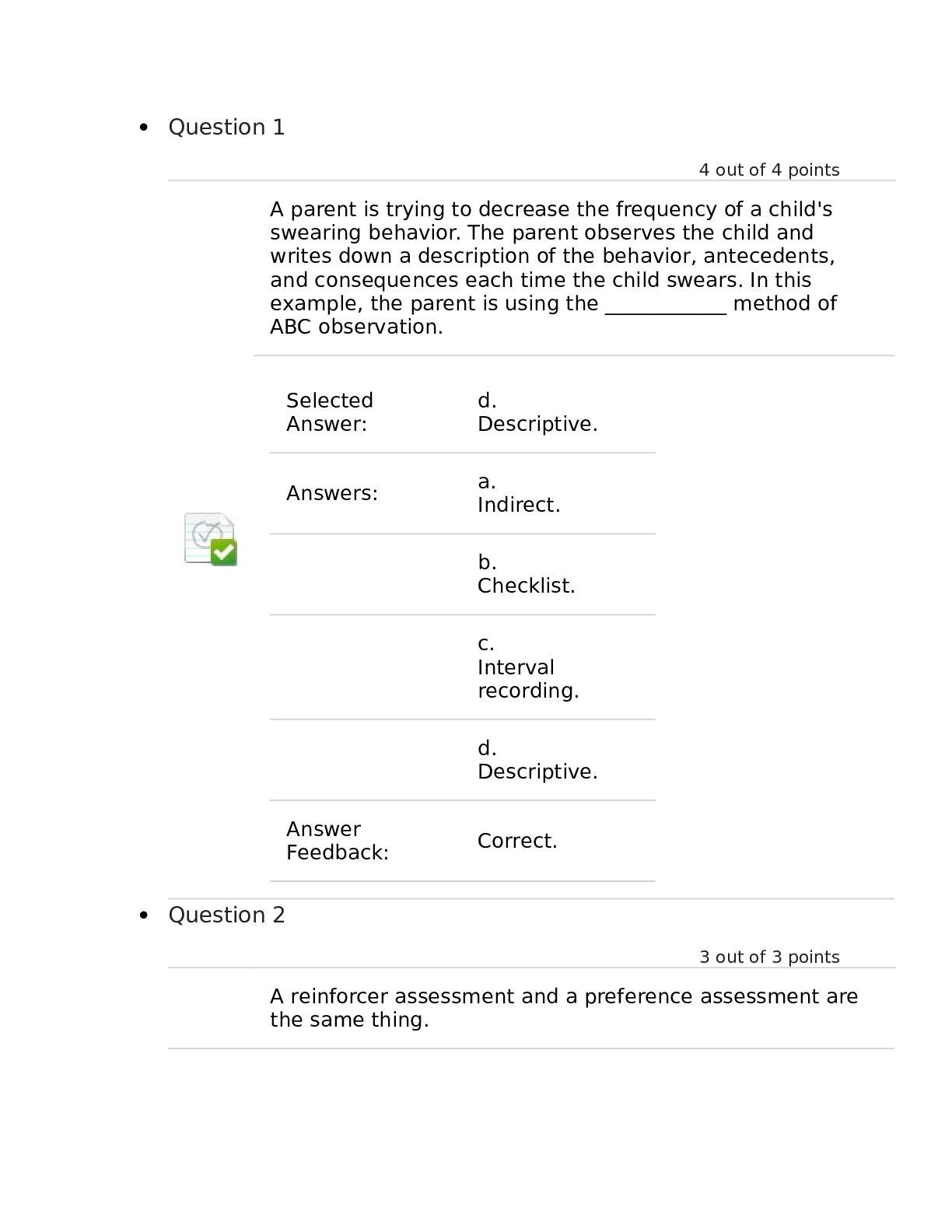
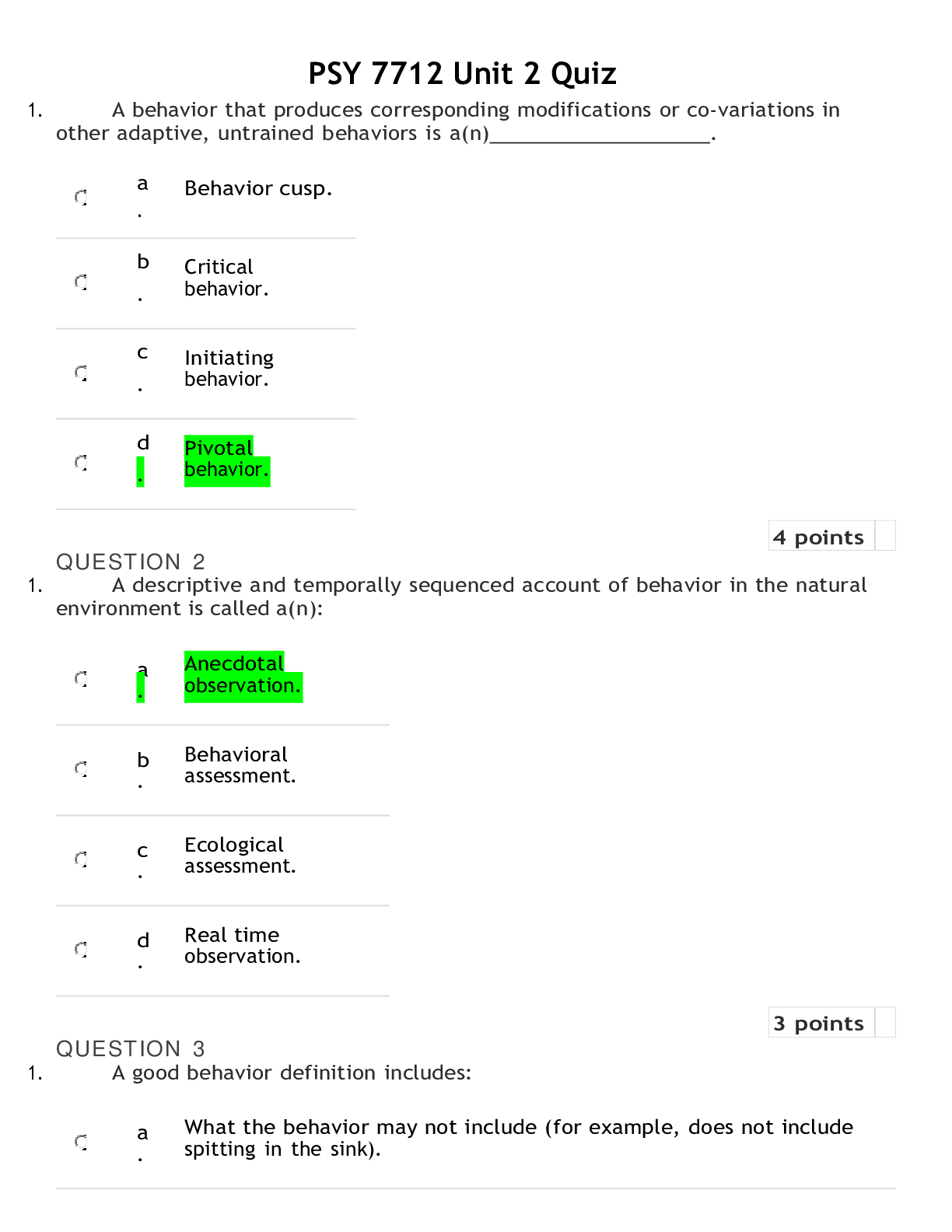


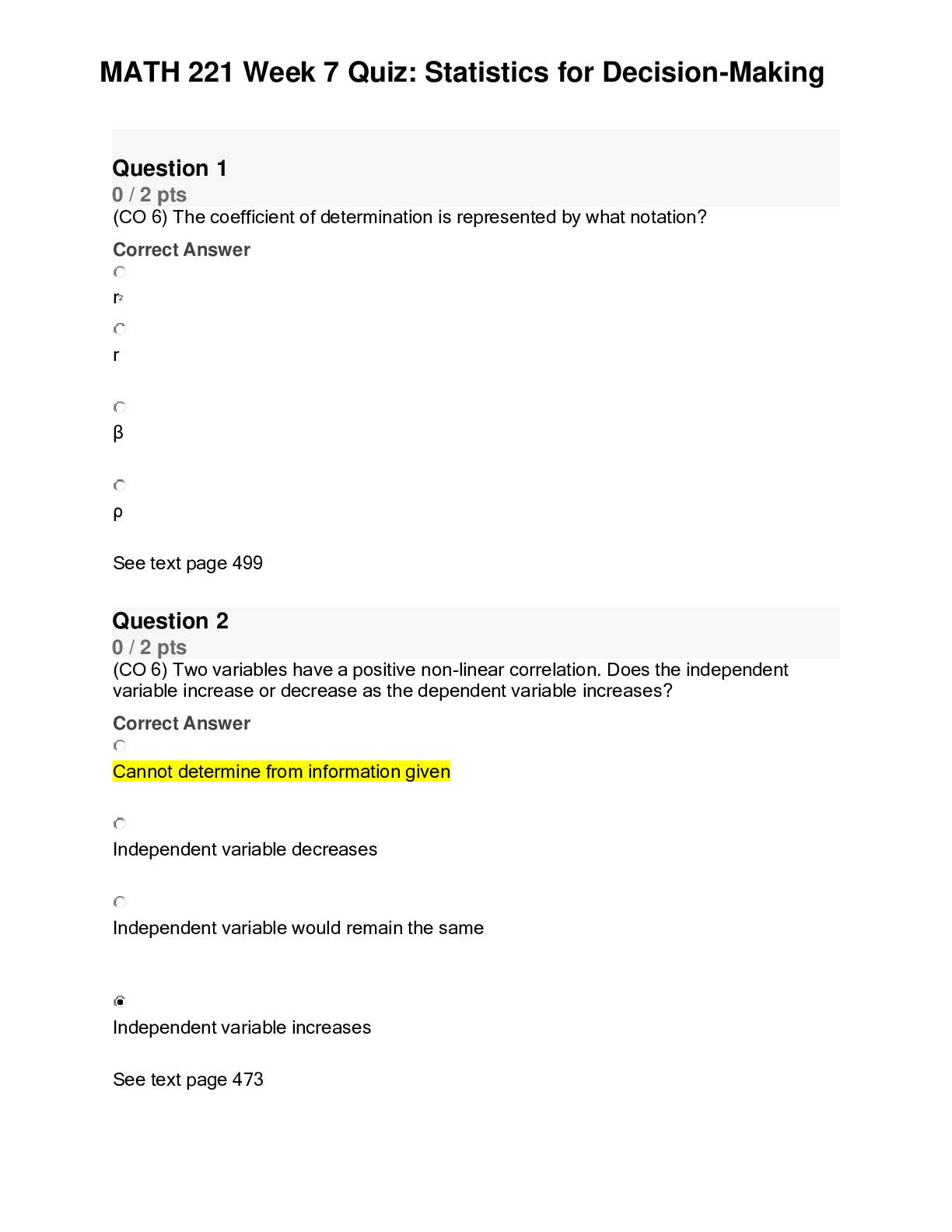
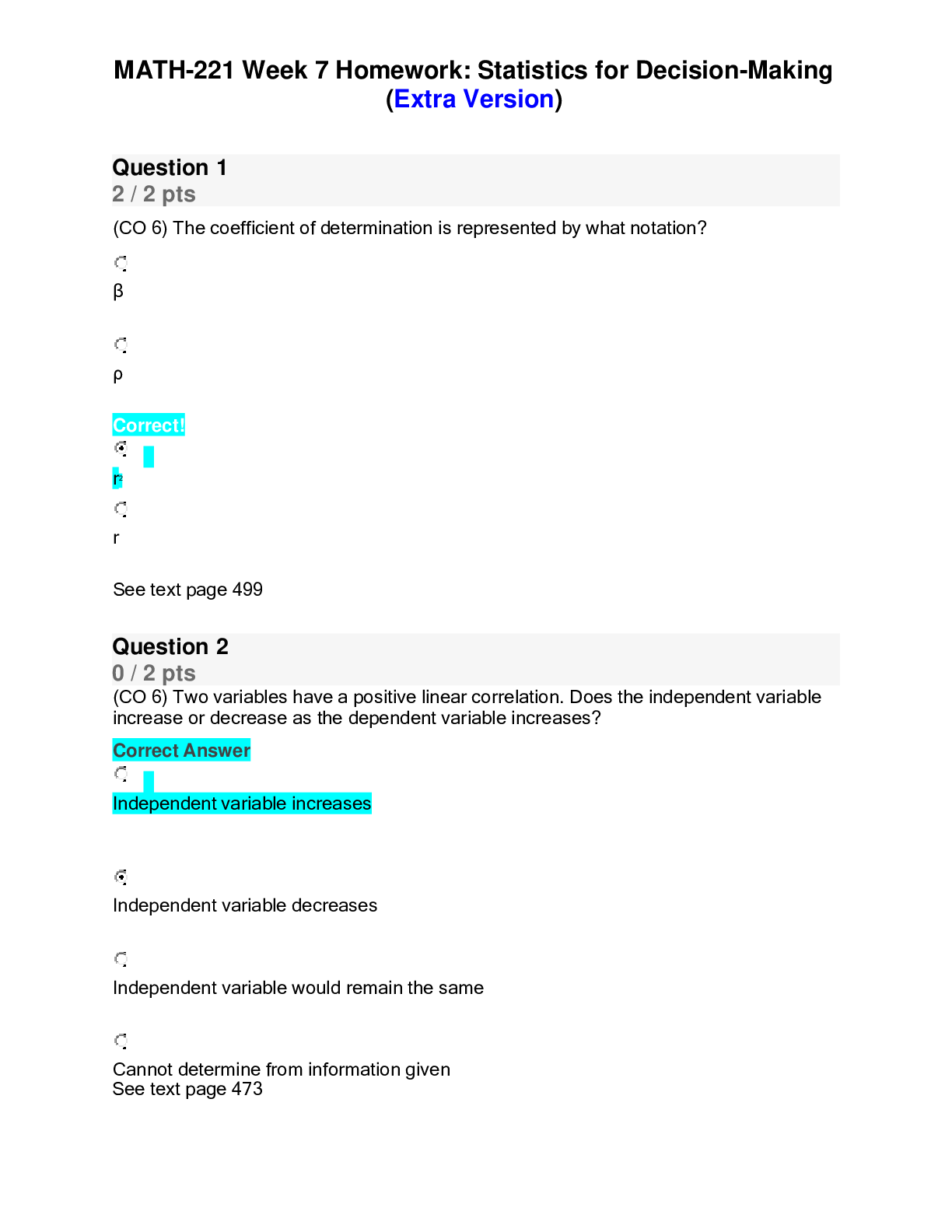

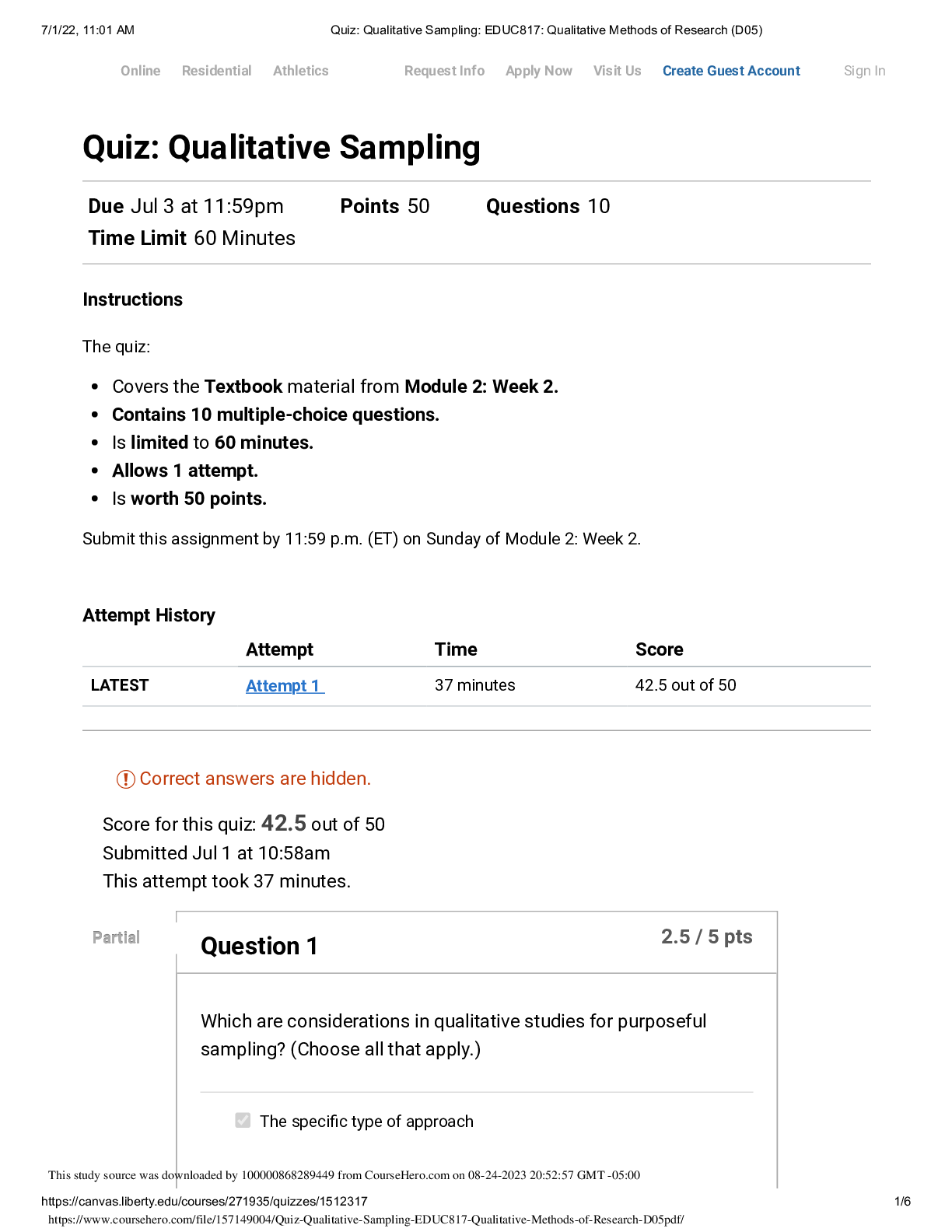
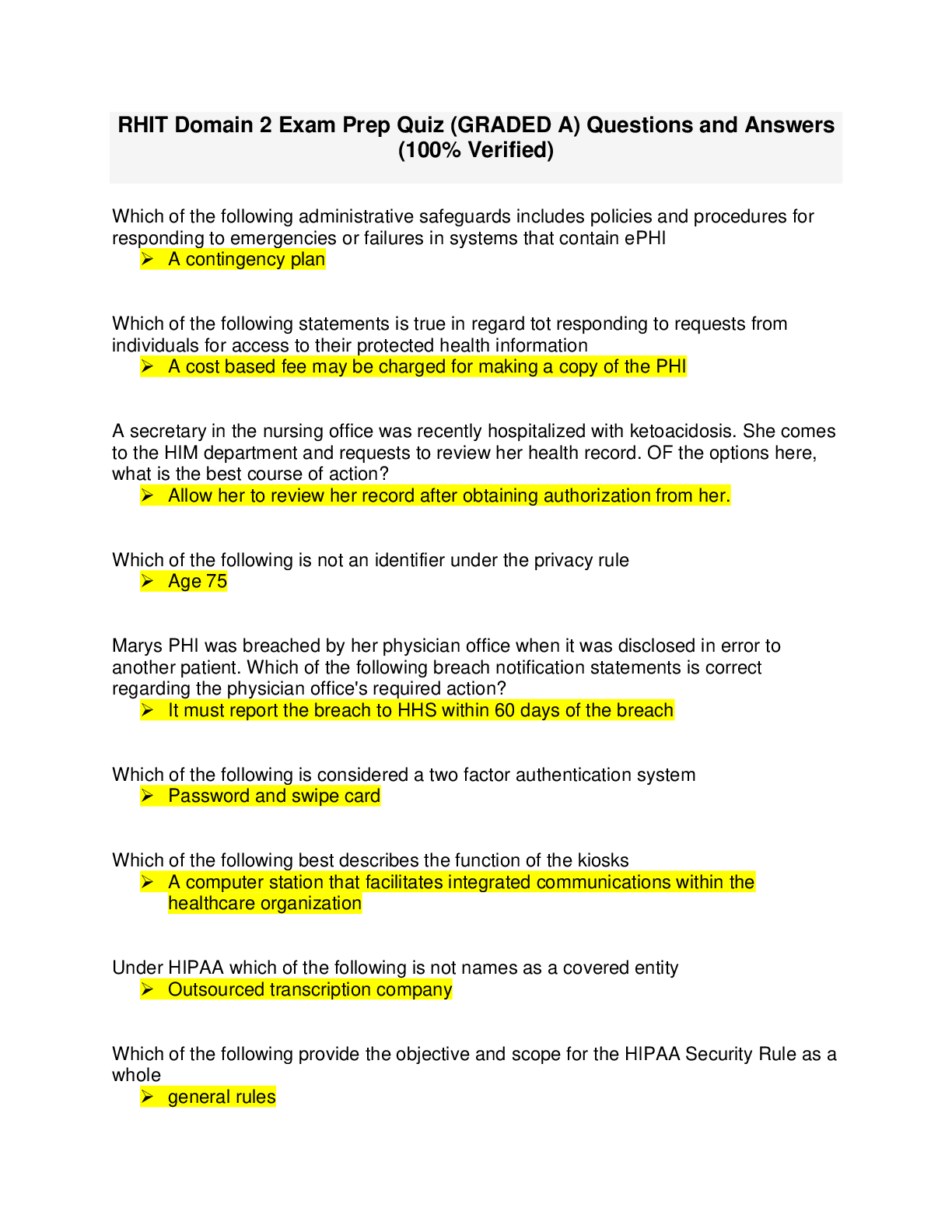
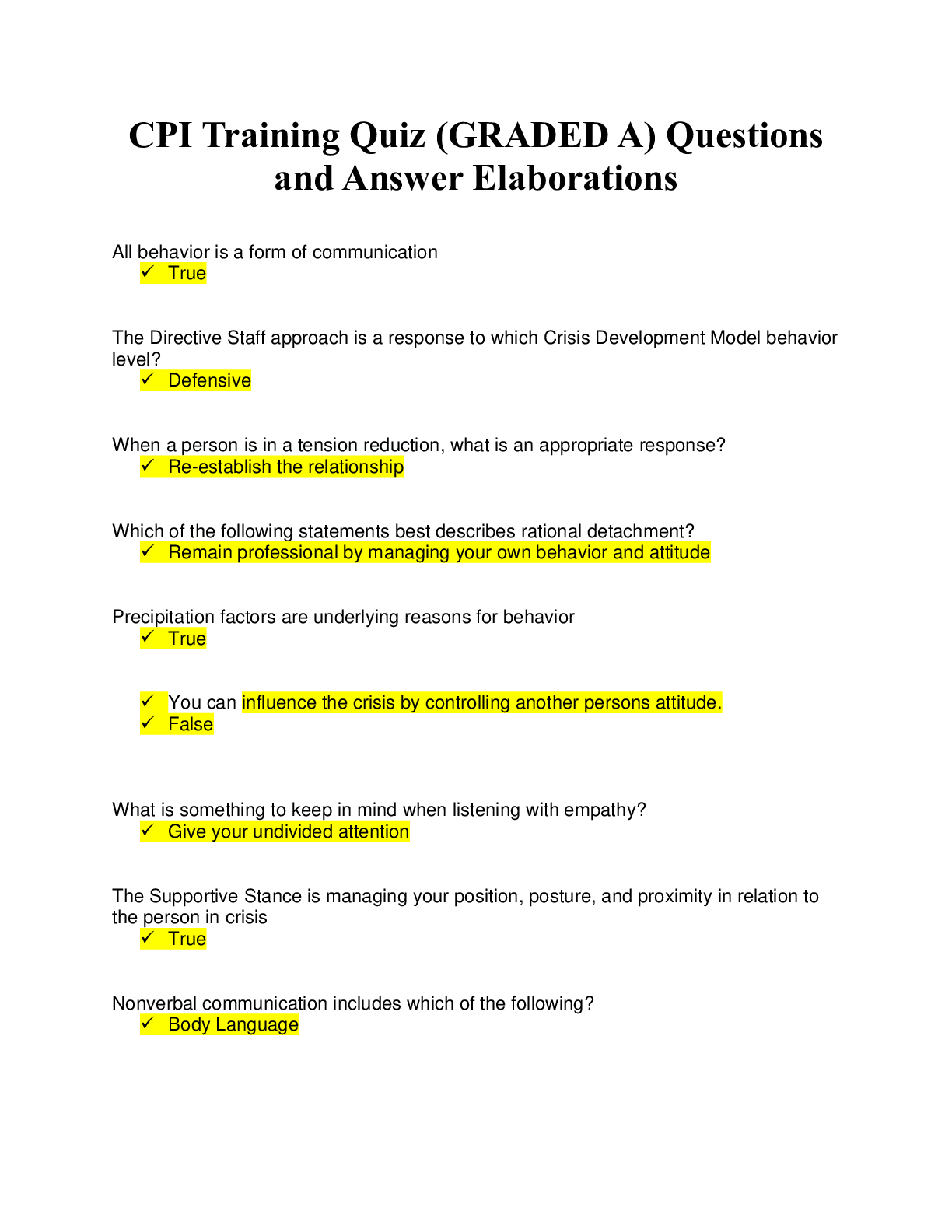
 Questions and Answers Guaranteed Pass Southeastern Louisiana Univer.png)
 Questions and Answers Download To Score An A.png)
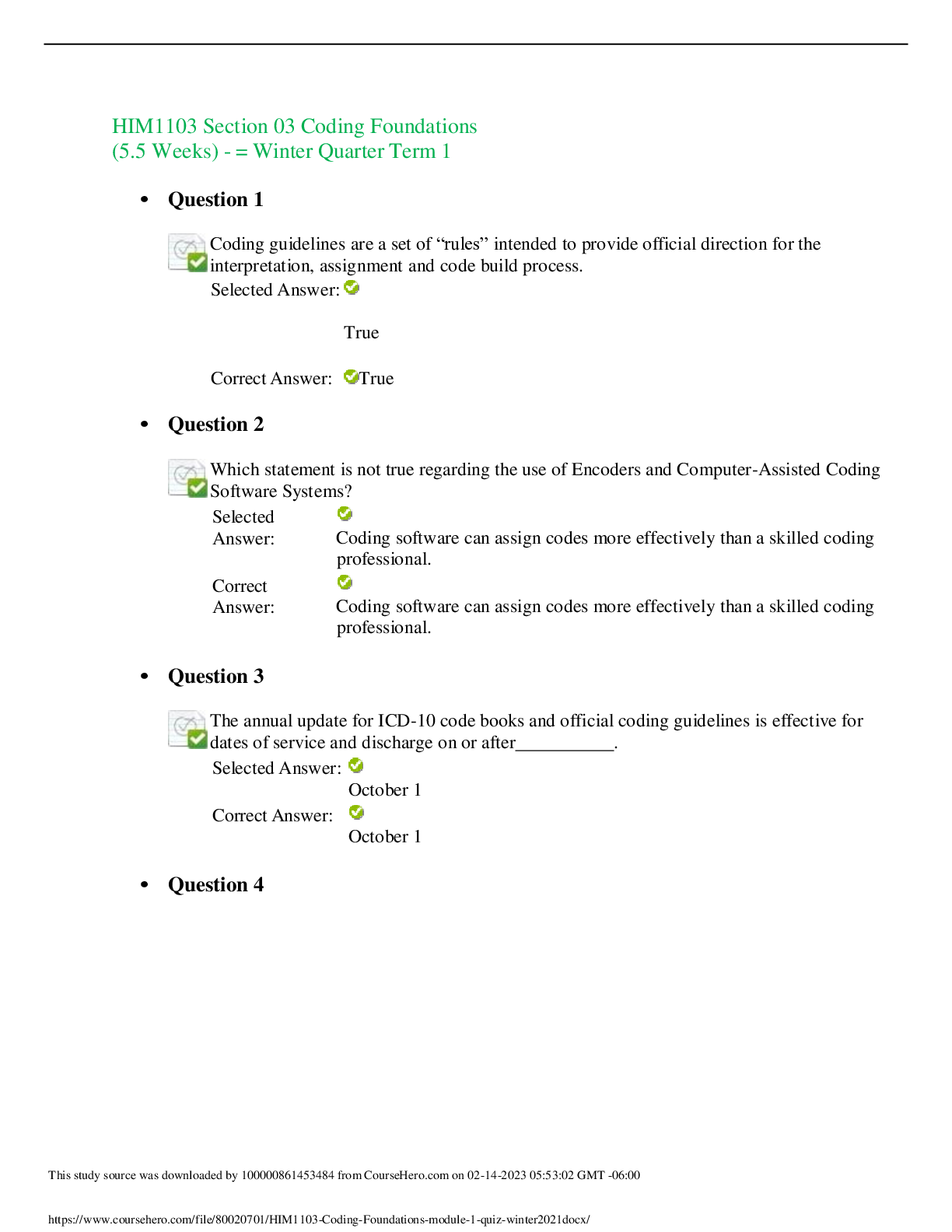

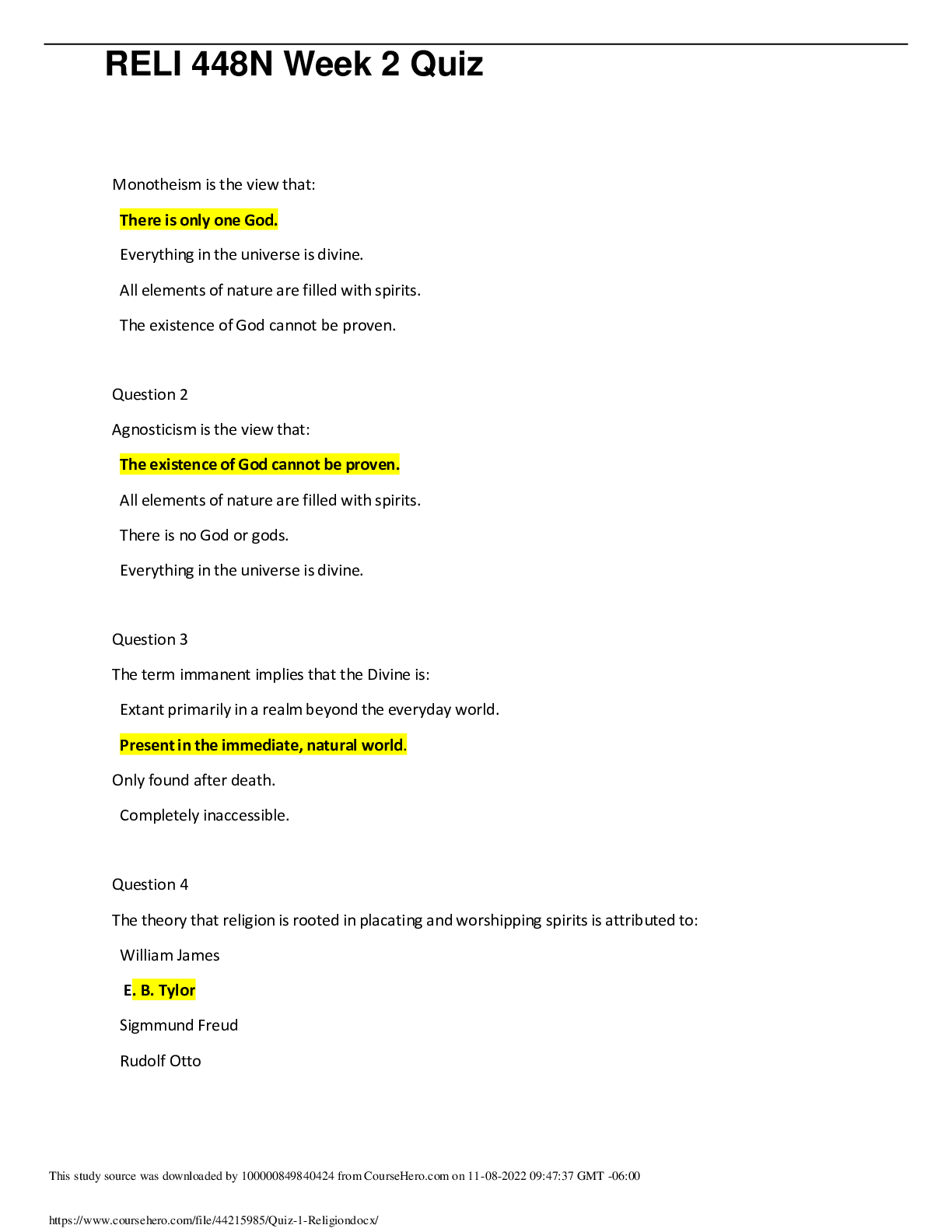

.png)


.png)
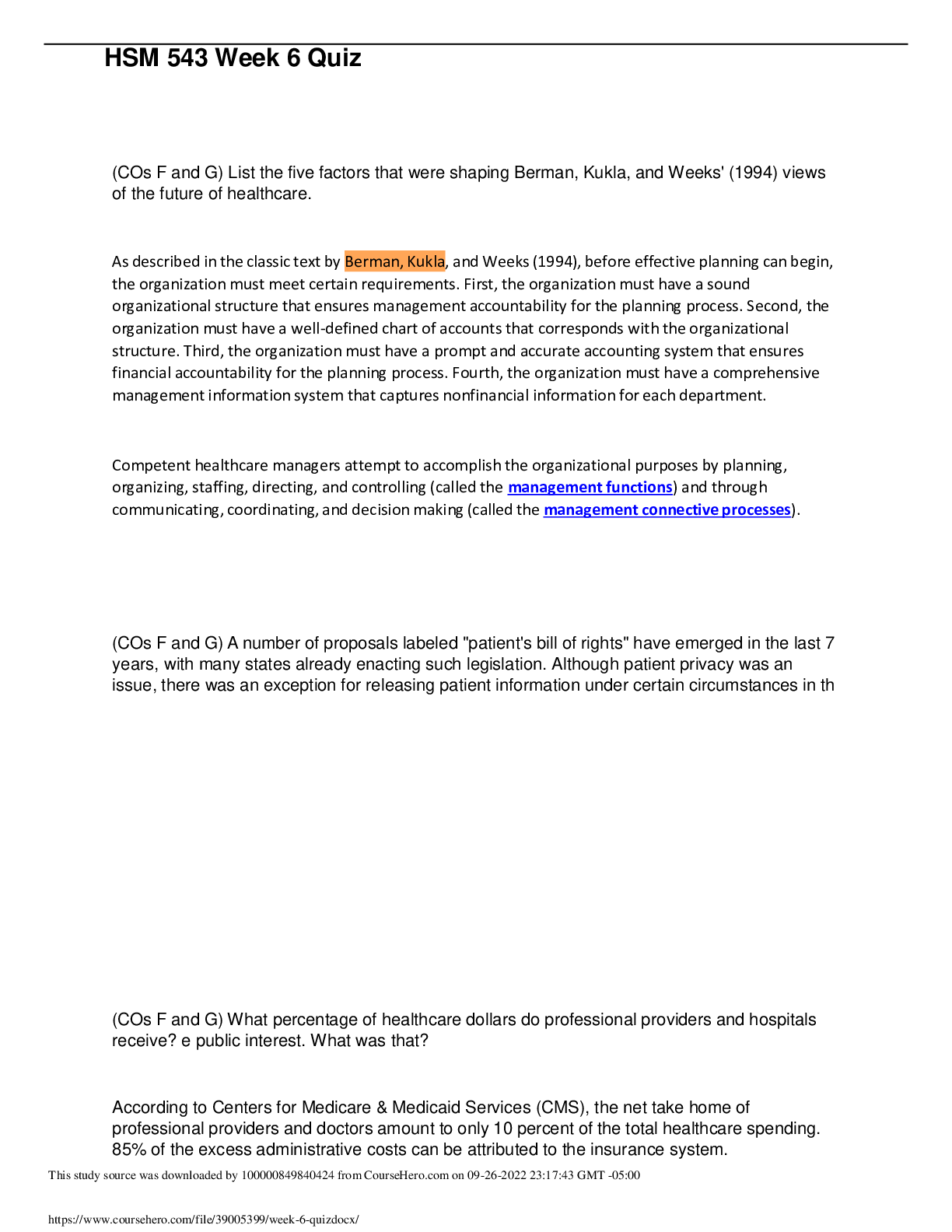
 (1).png)

